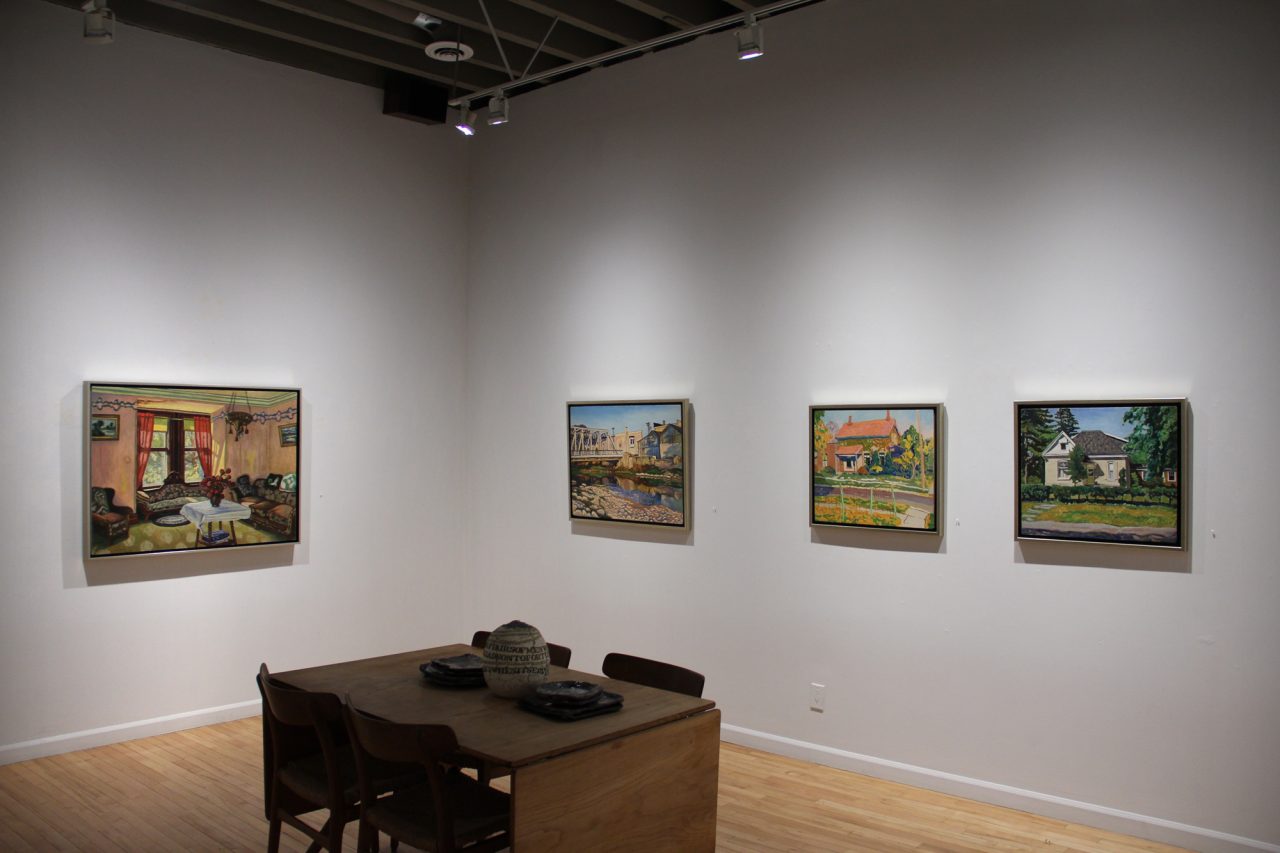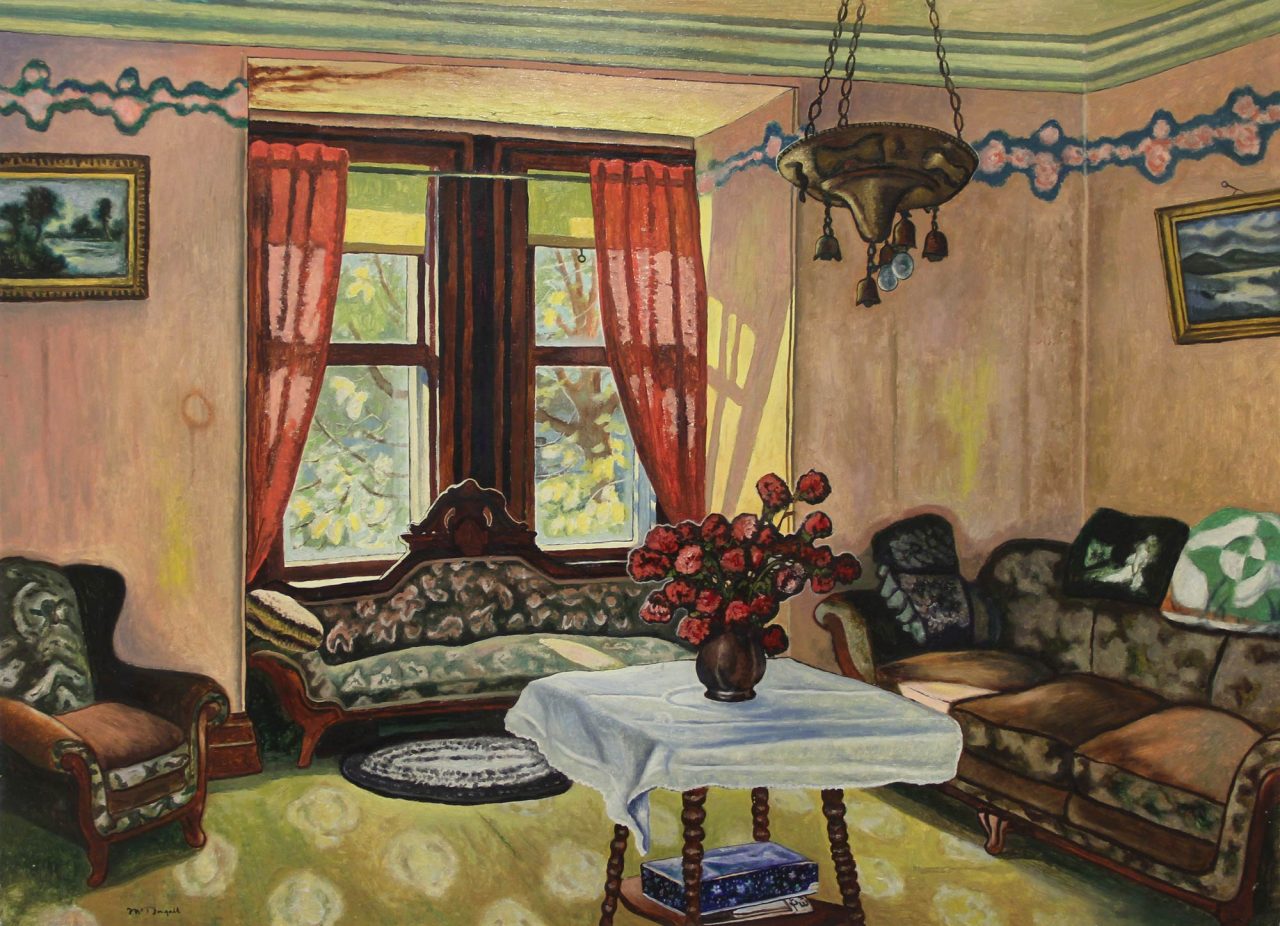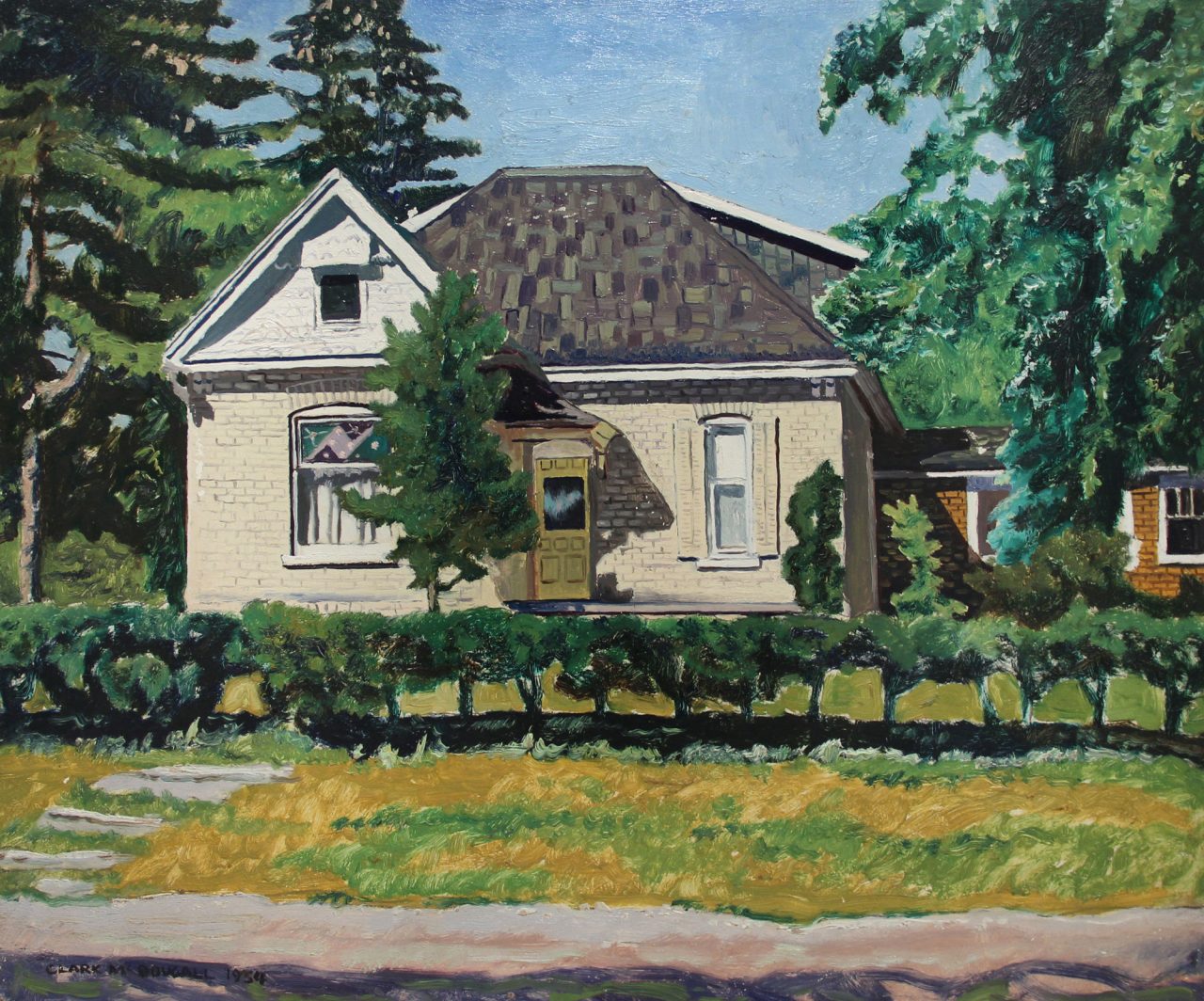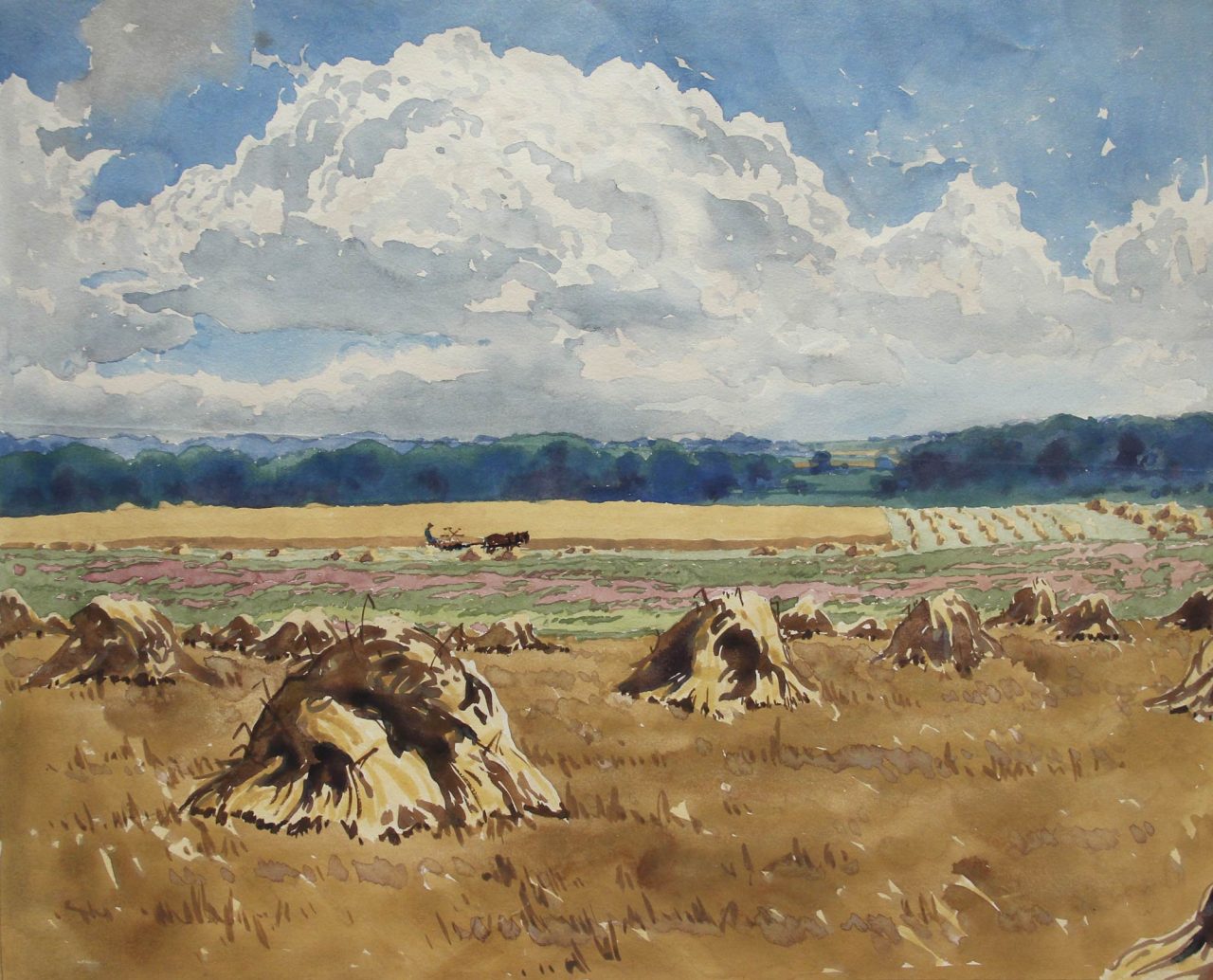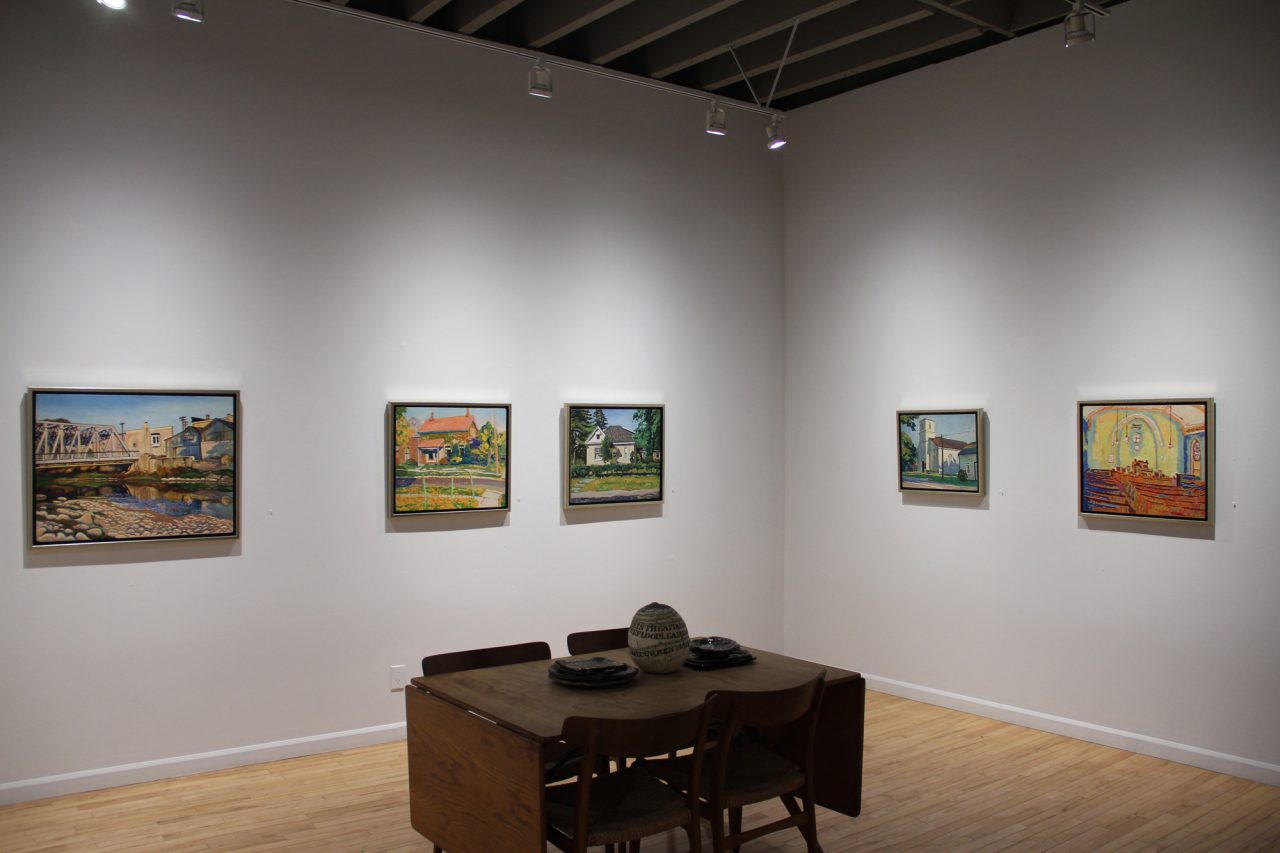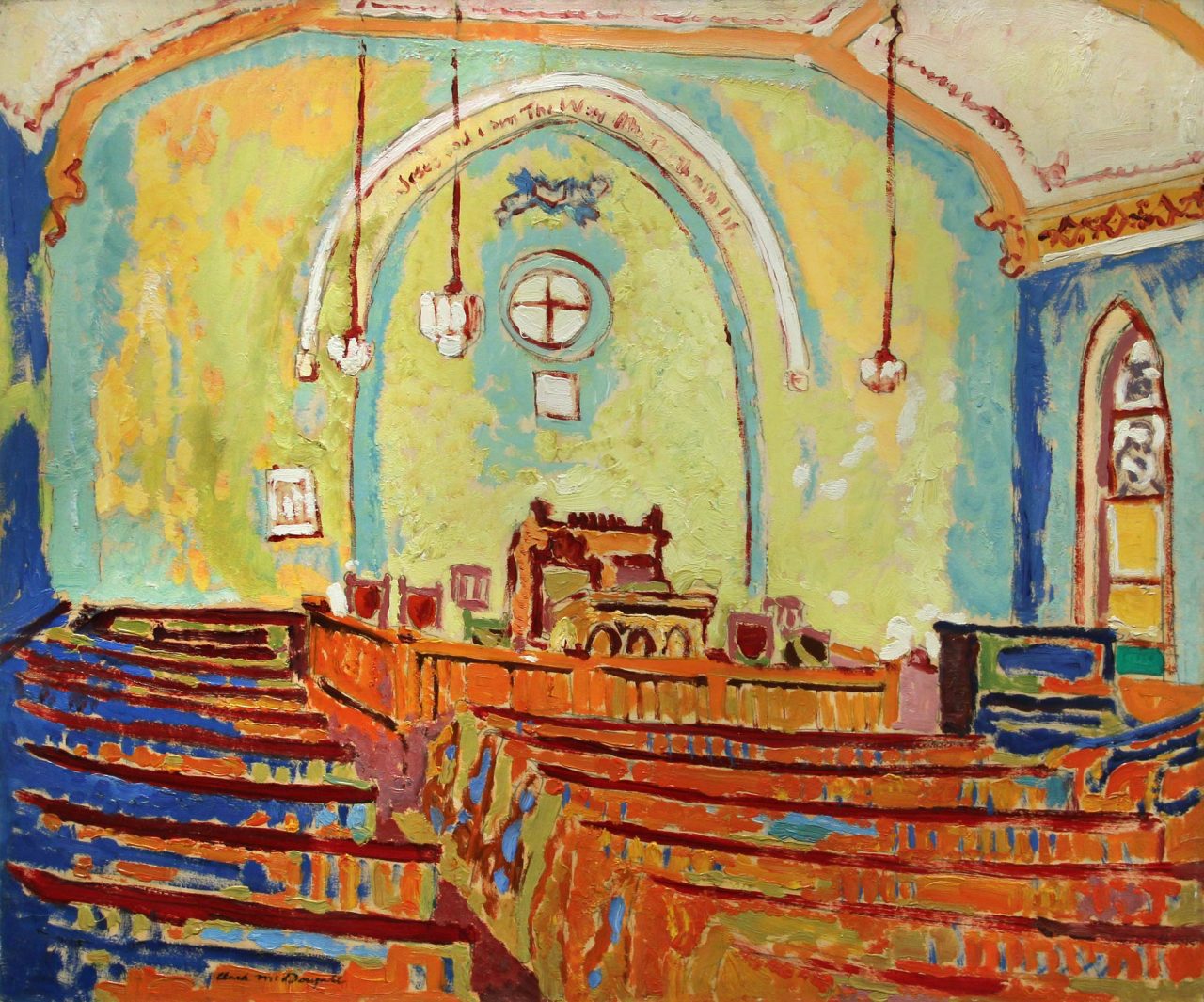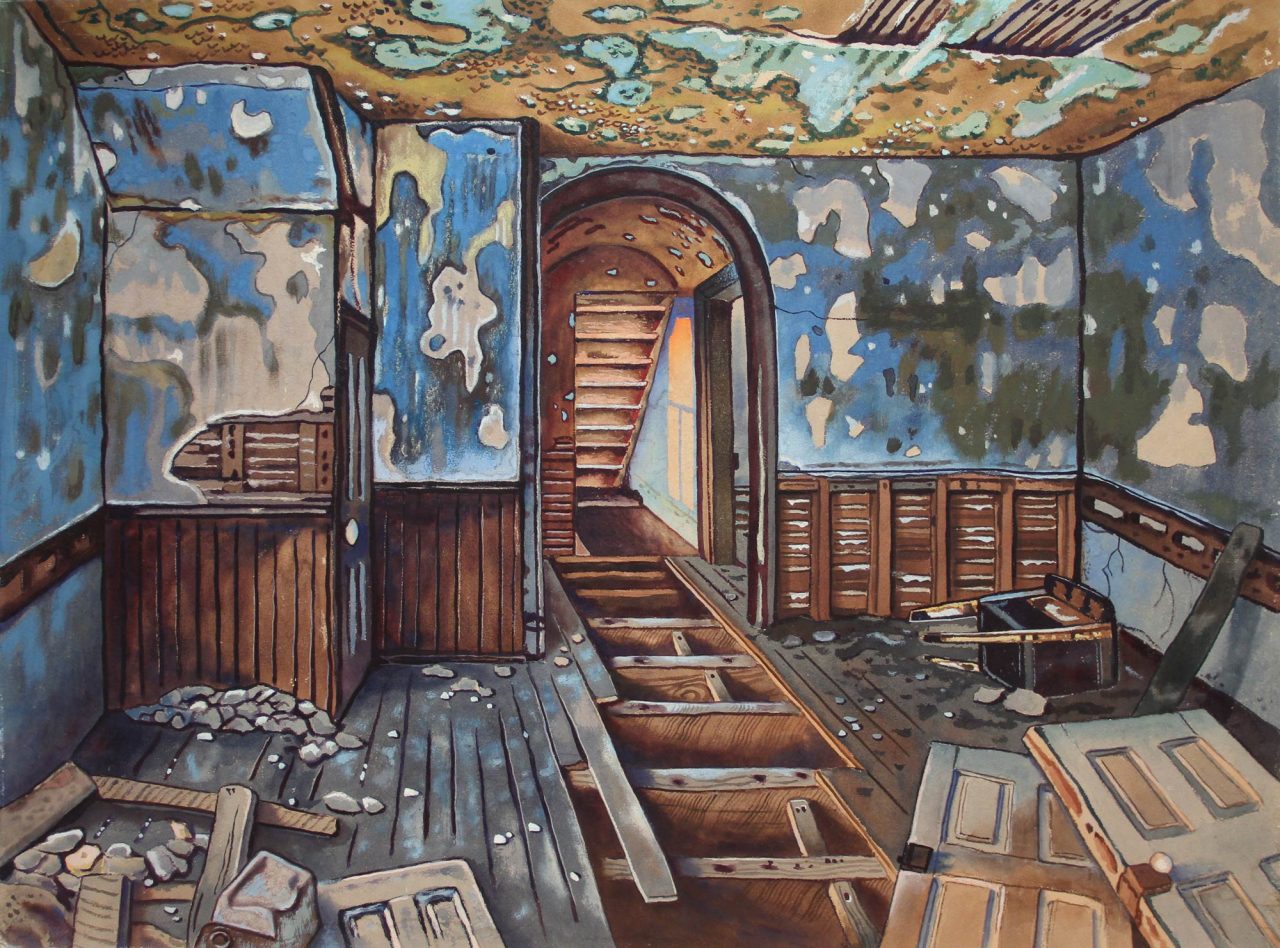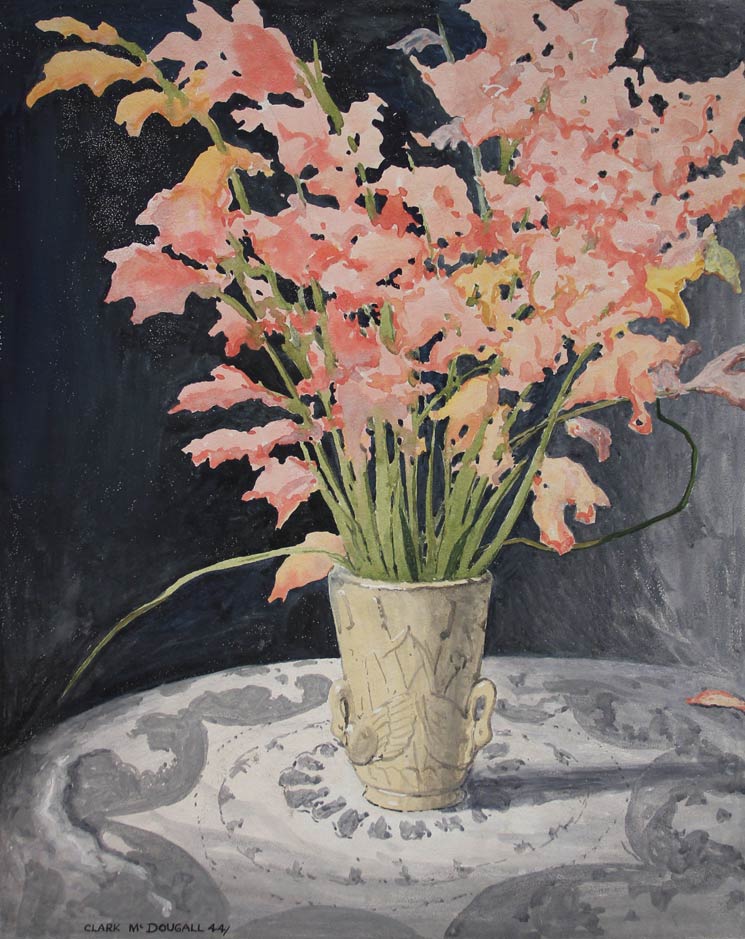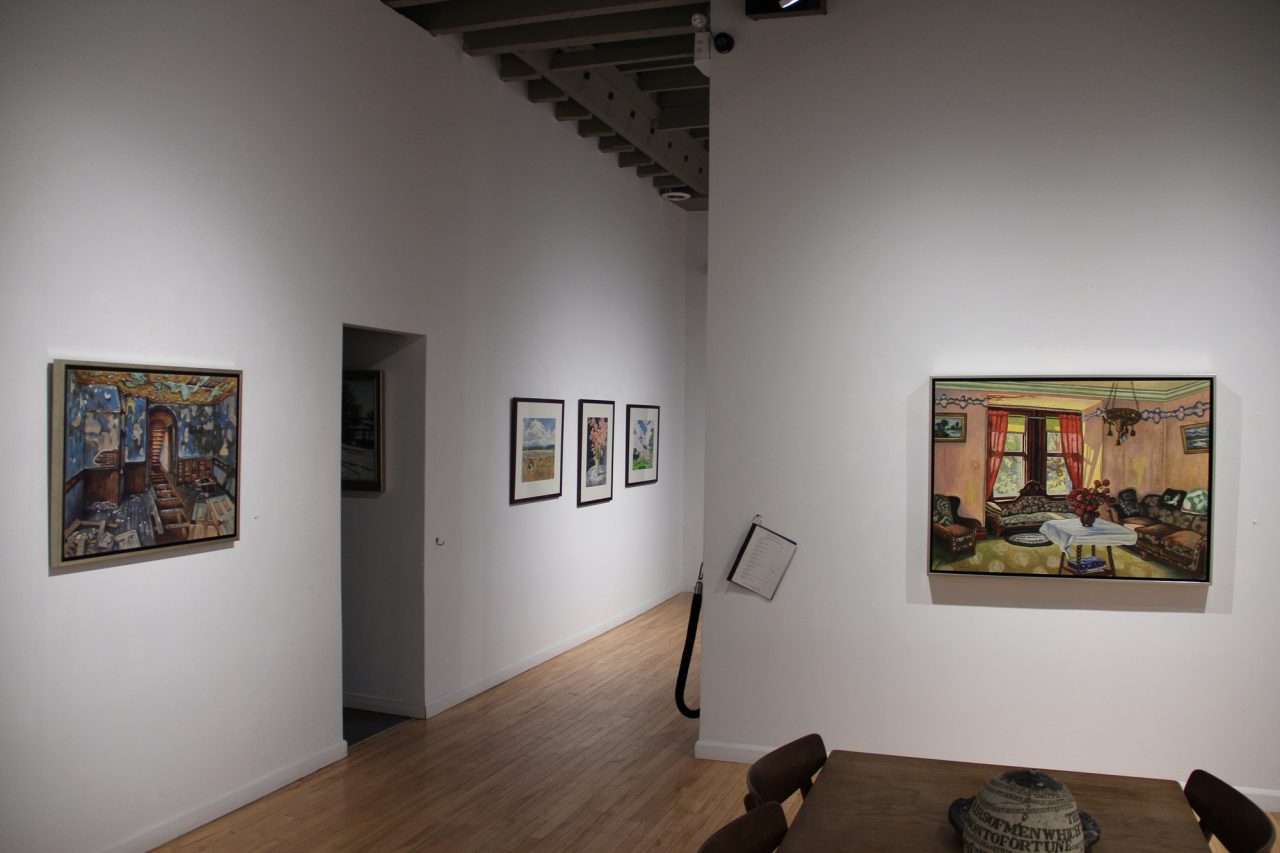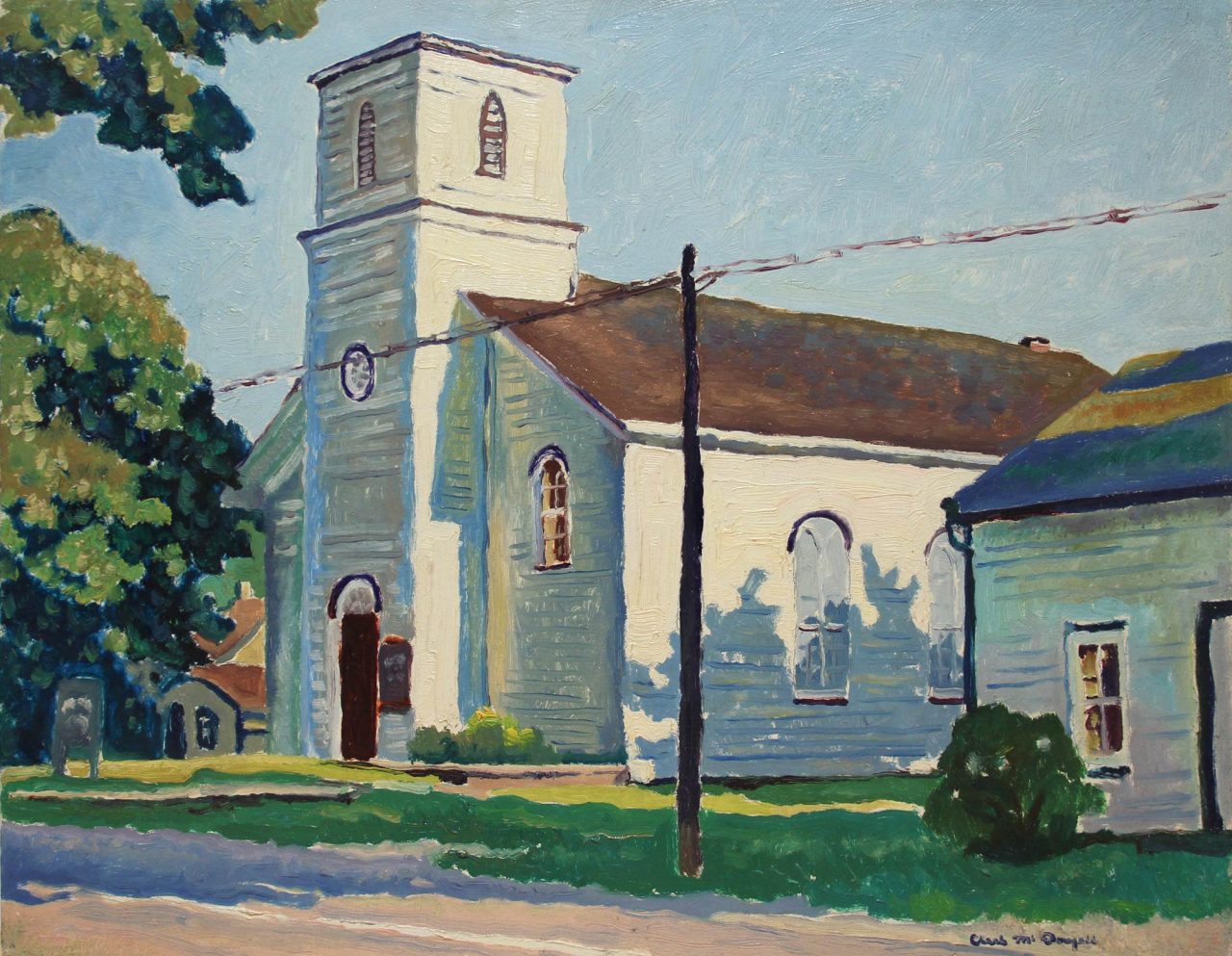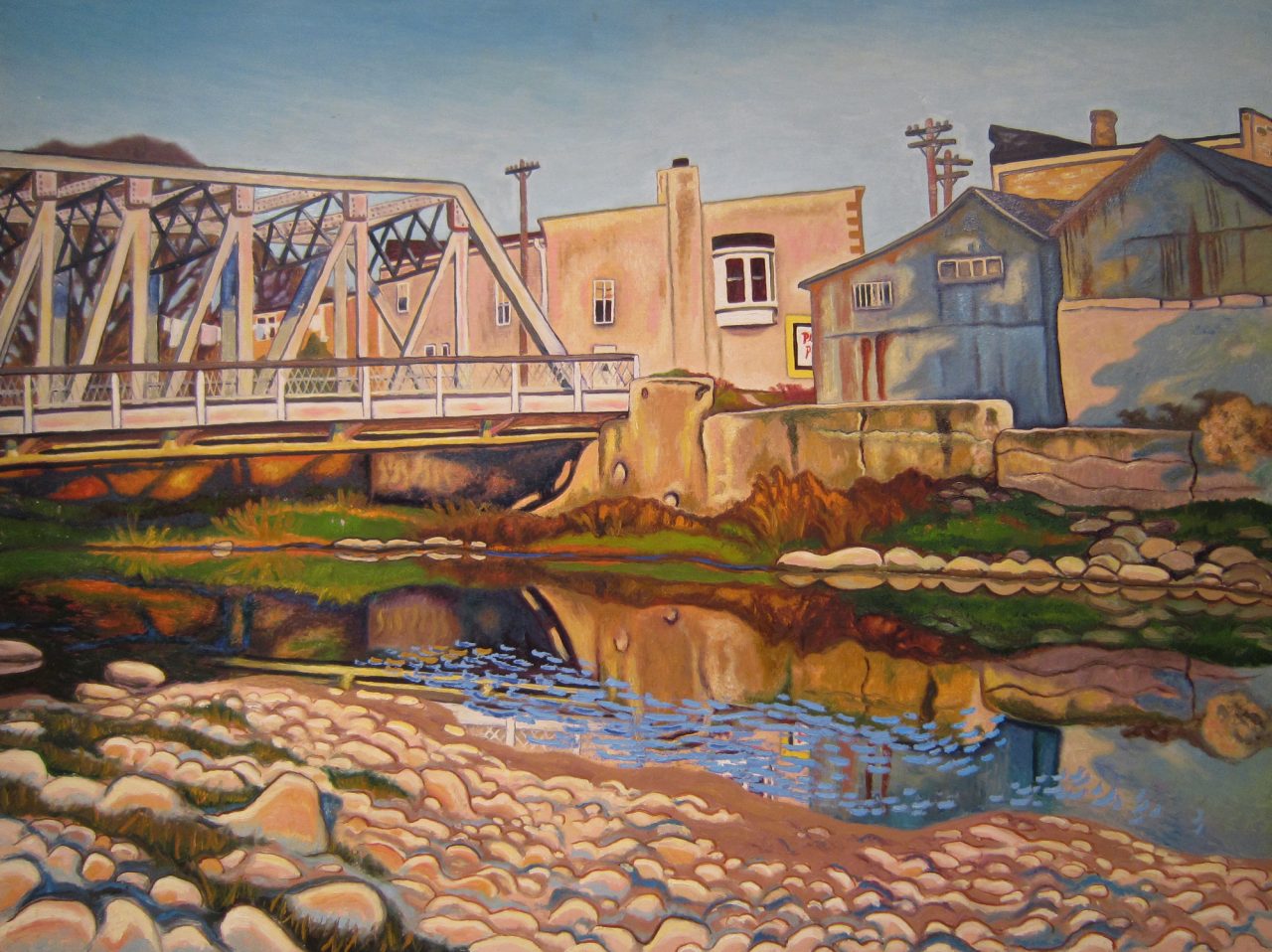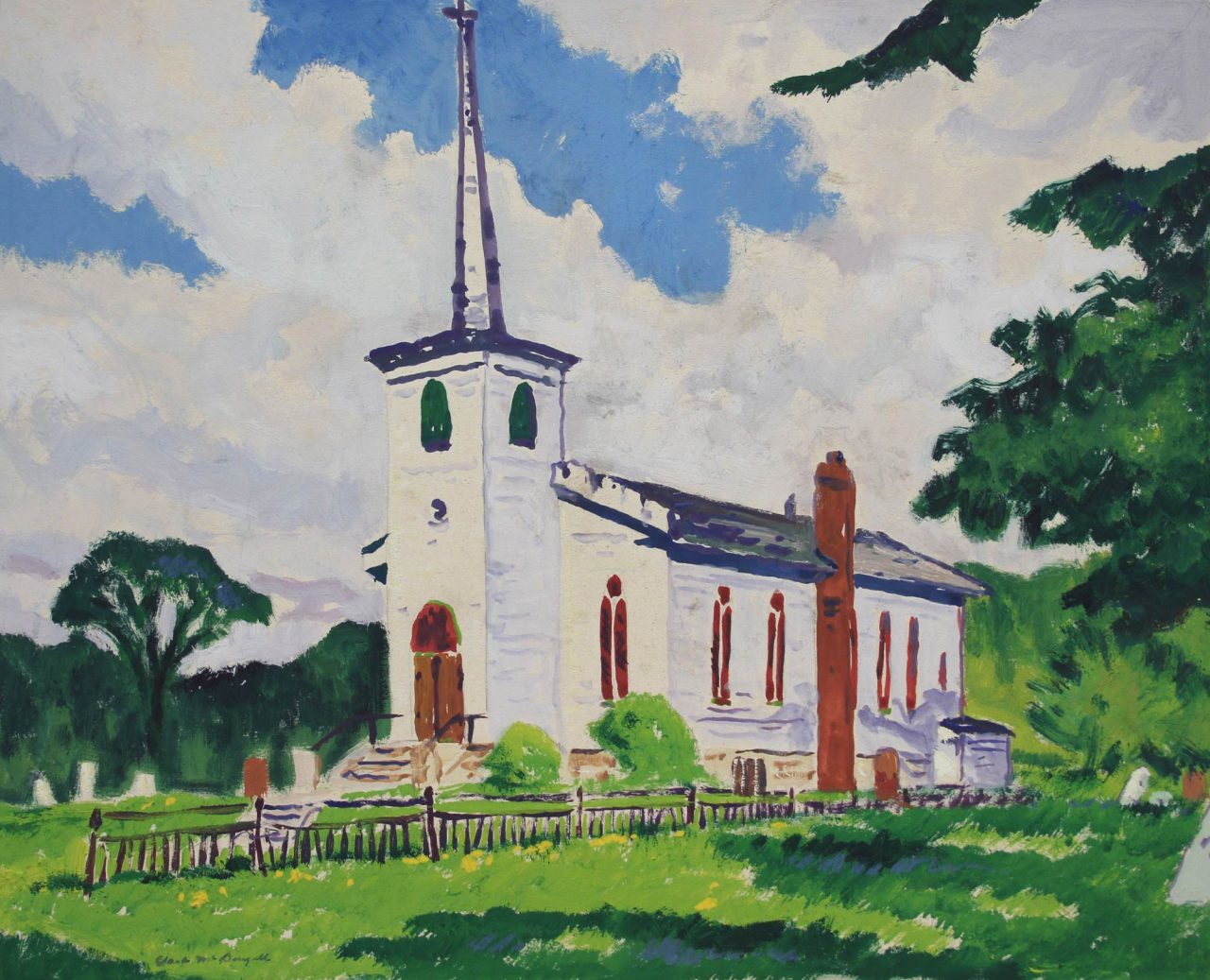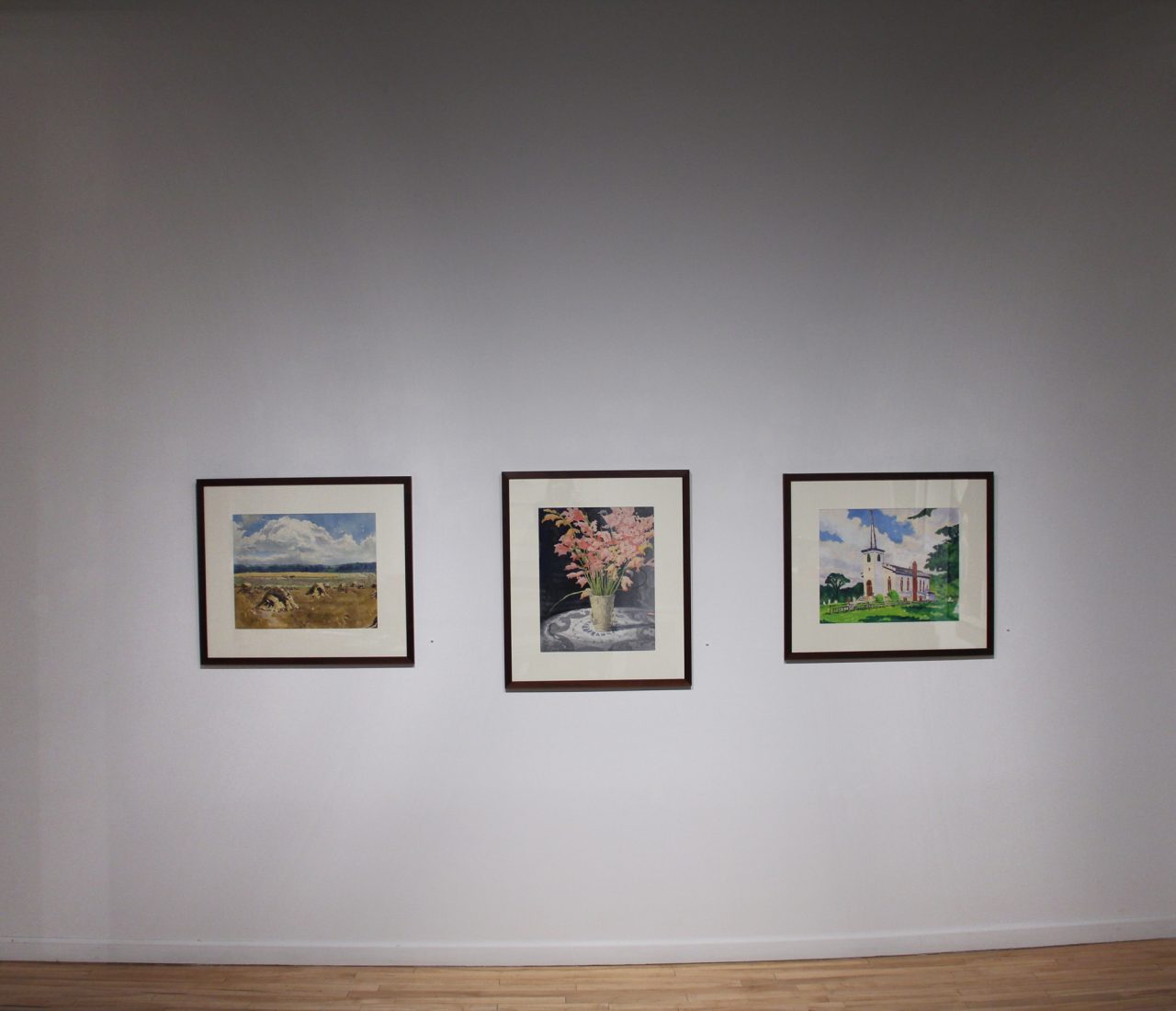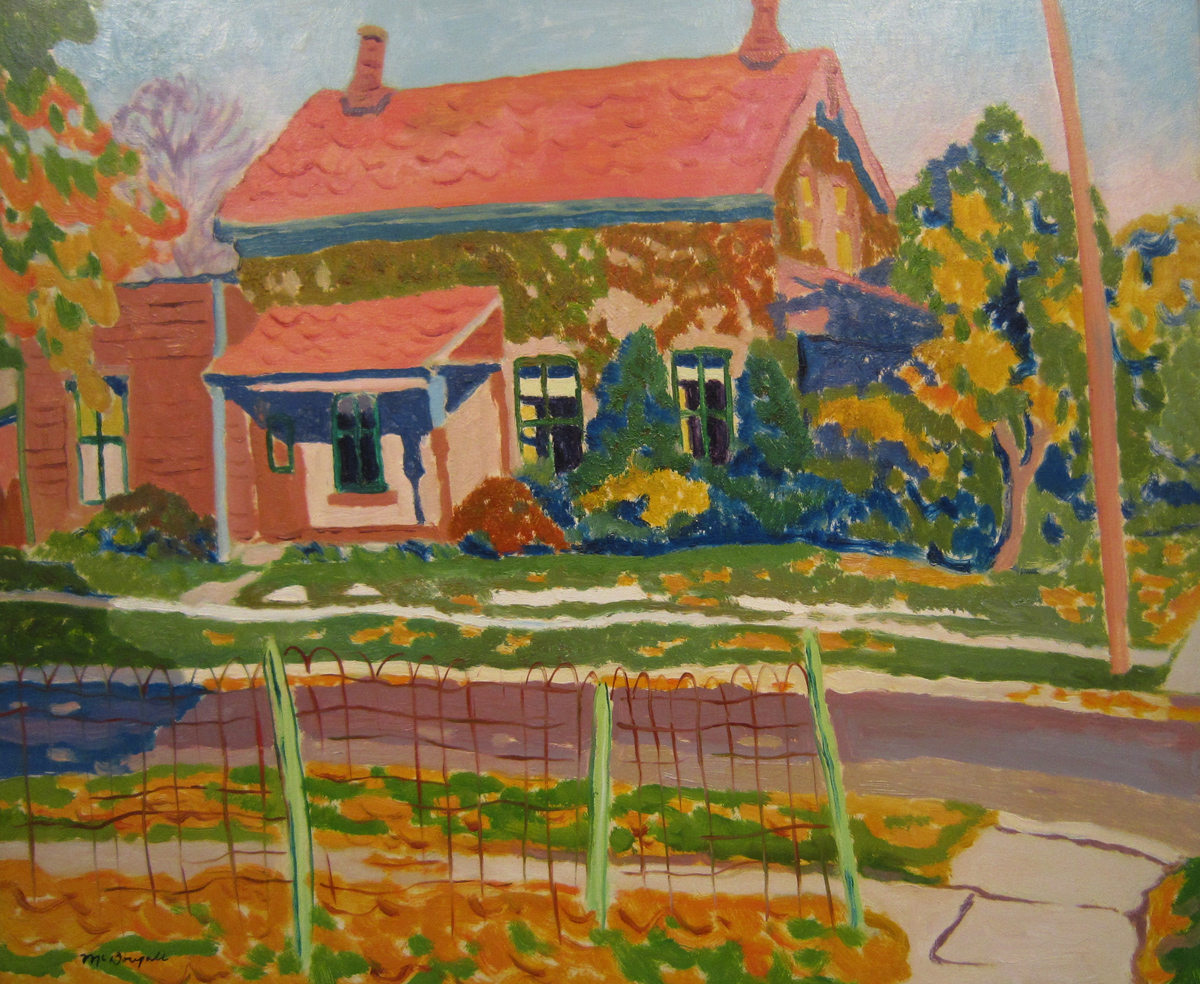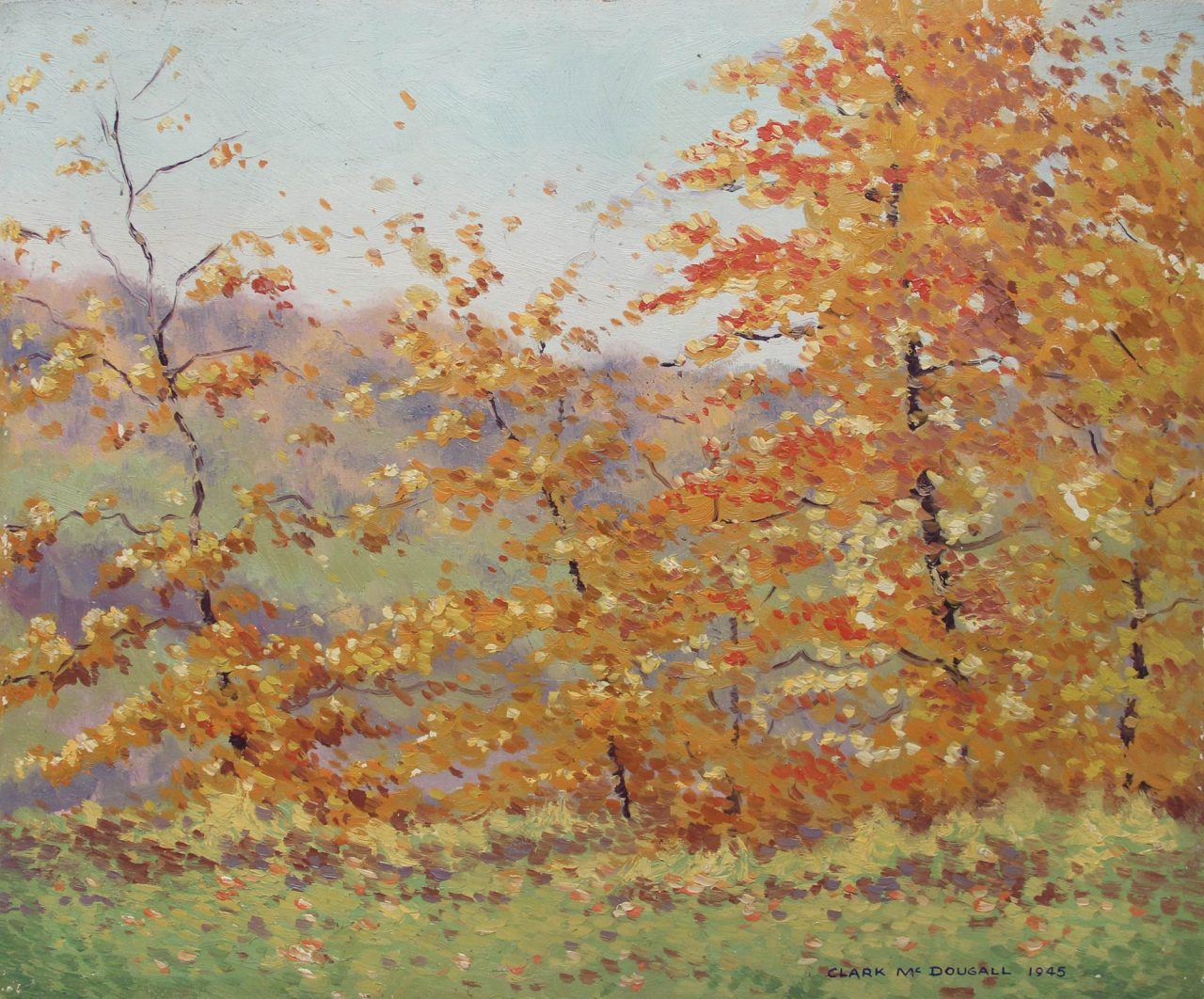Clark McDougall 1944-1954
Clark McDougall “Paintings from 1944-1954” — March 3 – 25, 2017
The years 1944-1954 were a seminal time in the development of Clark McDougall’s career as an artist. During the 10 years, McDougall refined his style through extensive learning, exhibiting and travelling. Our exhibition features rare paintings and watercolours from this important decade – from his carefree early watercolours, through to his discovery of the French “Fauve” painters and his use of outline as a unifying element.
Diagnosed with a leaky heart valve at the beginning of WWII, Clark McDougall was unable to join the Air Force and instead was transferred to war work. In 1944 McDougall was living in Toronto, working for the Sutton Horsley Instrument Company as an inspector. Along with a few exhibitions at commercial galleries, he continued to paint returning home every weekend to work on his watercolours. At the age of 23 in 1944, McDougall tried to enroll at the Ontario College of Art in Toronto. But, as others had in the past, the teachers told him that he would benefit little from formal training. So, McDougall moved home to St. Thomas and once again took up his daily painting routine and began, for the first time, to paint oils.
In July 1945 he went to Drayton, Ontario on a sketching trip and painted the village of Drayton and the landscape of the Erin hills. Also in 1945 he married Muriel Tidy and moved to a house on Redan Street. Unfortunately, the marriage was not a success and after a couple of years, the two divorced and McDougall moved back in with his mother on Inkerman Street. During these years McDougall exhibited at Lenora Morton Gallery in NYC, with the Buffalo Society of Artists, Buffalo, NY, at the Art Gallery of Hamilton and the David Garfield Gallery in Toronto.
1950 was an important year in McDougall’s life as a painter. Brock Davis, a friend from Drayton, drove McDougall to Montreal and Quebec City where he saw for the first time the paintings of Henri Matisse, John Lyman and J.W. Morrice. He realized instantly that colour and outline could be used in an expressive way. Upon returning home he experimented with a new style, a bolder more expressionistic approach with elements enclosed by clear outlines. By 1953 he was fully into his “Fauve” period.
In 1954 McDougall met Clement Greenberg, noted American critic, at a symposium at the Albright-Knox Gallery in Buffalo. McDougall selected eight recent paintings and spent a couple of hours with Greenberg discussing his work. The conversation with a sophisticated, cosmopolitan critic impacted McDougall’s philosophy about art and validated his existence as a painter working in a small, local community.
Clark McDougall was born in St. Thomas in 1921. At the age of 16 Clark left high school determined to become an artist. He would ride his bike north of St. Thomas into North Yarmouth and paint watercolours directly from nature. He taught himself proper technique from library books and sought advice from local artist William St. Thomas Smith. In 1950, at the age of 29, Clark traveled to Montreal and Quebec City where he first experienced the paintings of Henri Matisse. He now realized that colour and line could be used in a completely different way. By 1952-3 Clark was working as a “Fauve” painter, where his colours were intensely vivid and non-naturalistic.
A coronary in 1957 forced Clark to paint from photographs in his studio. His painting style changed where the outline became very important to the structure and design of the painting. Clark’s unique “black enamel” style set him apart from other regional artists. His first exhibition of these “black enamel” paintings was in 1968 at the 20/20 Gallery, London. In 1976 the Volunteer Committee at the London Regional Art Gallery commissioned a painting, “Site”, to commemorate the building of the new gallery. In 1977 the Vancouver Art Gallery organized an exhibition “Clark McDougall: Paintings since 1953”.
Regardless of the style, however, Clark had a highly individual way of interpreting his beloved landscape of North Yarmouth. Clark McDougall passed away of a brain tumor in 1980 at the age of 59. In 1987 the London Regional Art Gallery mounted a large retrospective exhibition of Clark’s work. Most recently in 2011, the McIntosh Gallery, UWO produced a hard-cover book to accompany their exhibition “Fugitive Light: Clark McDougall’s Destination Places”. Michael Gibson Gallery represents the Estate of Clark McDougall. His paintings are in countless corporate collections as well as the Art Gallery of Ontario, Vancouver Art Gallery, Museum London and the Canada Council Art Bank.
